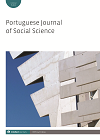
Full text loading...
 , Pedro Vasconcelos2
, Pedro Vasconcelos2
Focusing on trans and gender-diverse people in five European countries (Portugal, France, the United Kingdom, the Netherlands and Sweden), the Transrights research addressed one of the most challenging transformations of the institutional order of gender that thus far still reproduces the normative opposition between male and female. Rather than proposing a descriptive monograph, our angle of analysis emphasized the workings of gender through the ‘voices’ of trans people (within and beyond Europe) and their complex forms of self-identification vis-à-vis the institutional apparatus (whether legal, medical, political or even social-scientific). Drawing on an extensive empirical research that combined document analysis of legal and medical developments, multi-sited ethnographic fieldwork and in-depth interviews, we investigated the doings of gender and gender politics. Three major findings are highlighted and summarized through a comparative strategy: trans/gender identifications, creative agency and embodiments; institutional and legal recognition vis-à-vis the medical apparatus and the “marketization” of trans-related healthcare; and discrimination, oppression and violence.

Article metrics loading...

Full text loading...
References


Data & Media loading...

Publication Date:
https://doi.org/10.1386/pjss_00038_1 Published content will be available immediately after check-out or when it is released in case of a pre-order. Please make sure to be logged in to see all available purchase options.